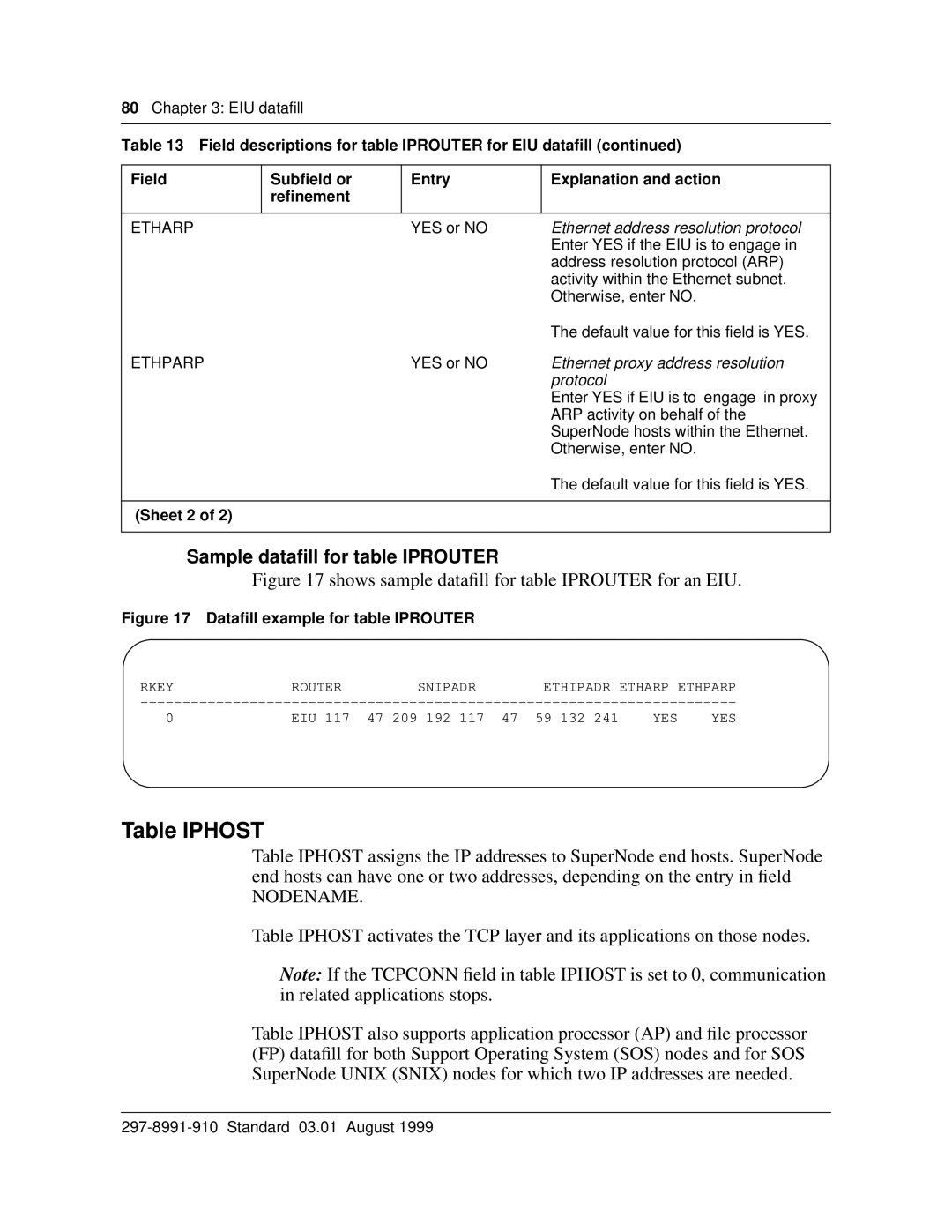
80Chapter 3: EIU datafill
Table 13 Field descriptions for table IPROUTER for EIU datafill (continued)
Field | Subfield or | Entry | Explanation and action |
| refinement |
|
|
|
|
|
|
ETHARP |
| YES or NO | Ethernet address resolution protocol |
|
|
| Enter YES if the EIU is to engage in |
|
|
| address resolution protocol (ARP) |
|
|
| activity within the Ethernet subnet. |
|
|
| Otherwise, enter NO. |
|
|
| The default value for this field is YES. |
ETHPARP |
| YES or NO | Ethernet proxy address resolution |
|
|
| protocol |
|
|
| Enter YES if EIU is to engage in proxy |
|
|
| ARP activity on behalf of the |
|
|
| SuperNode hosts within the Ethernet. |
|
|
| Otherwise, enter NO. |
|
|
| The default value for this field is YES. |
|
|
|
|
(Sheet 2 of 2) |
|
|
|
|
|
|
|
Sample datafill for table IPROUTER
Figure 17 shows sample datafill for table IPROUTER for an EIU.
Figure 17 Datafill example for table IPROUTER
RKEYROUTER SNIPADR ETHIPADR ETHARP ETHPARP
0 | EIU 117 47 209 192 117 47 59 132 241 | YES | YES |
Table IPHOST
Table IPHOST assigns the IP addresses to SuperNode end hosts. SuperNode end hosts can have one or two addresses, depending on the entry in field
NODENAME.
Table IPHOST activates the TCP layer and its applications on those nodes.
Note: If the TCPCONN field in table IPHOST is set to 0, communication in related applications stops.
Table IPHOST also supports application processor (AP) and file processor (FP) datafill for both Support Operating System (SOS) nodes and for SOS SuperNode UNIX (SNIX) nodes for which two IP addresses are needed.
